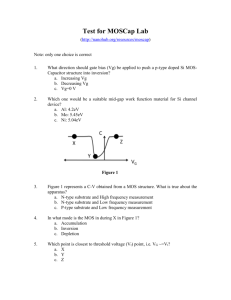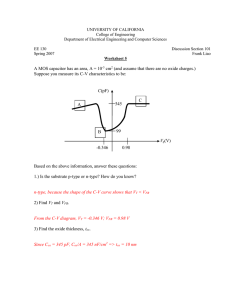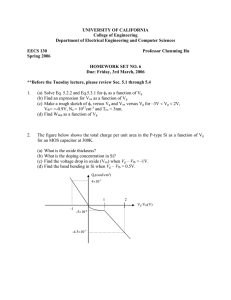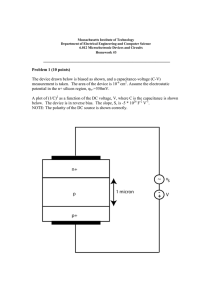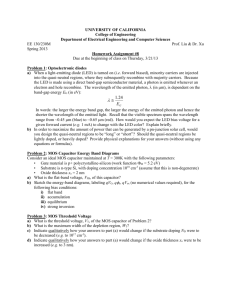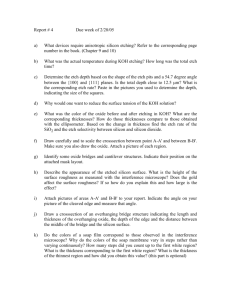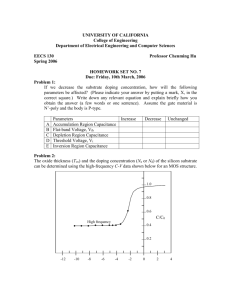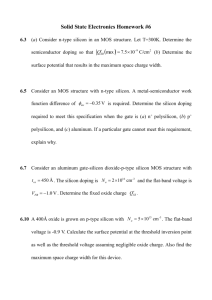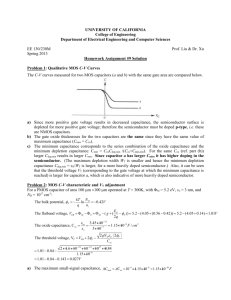Assignment
advertisement
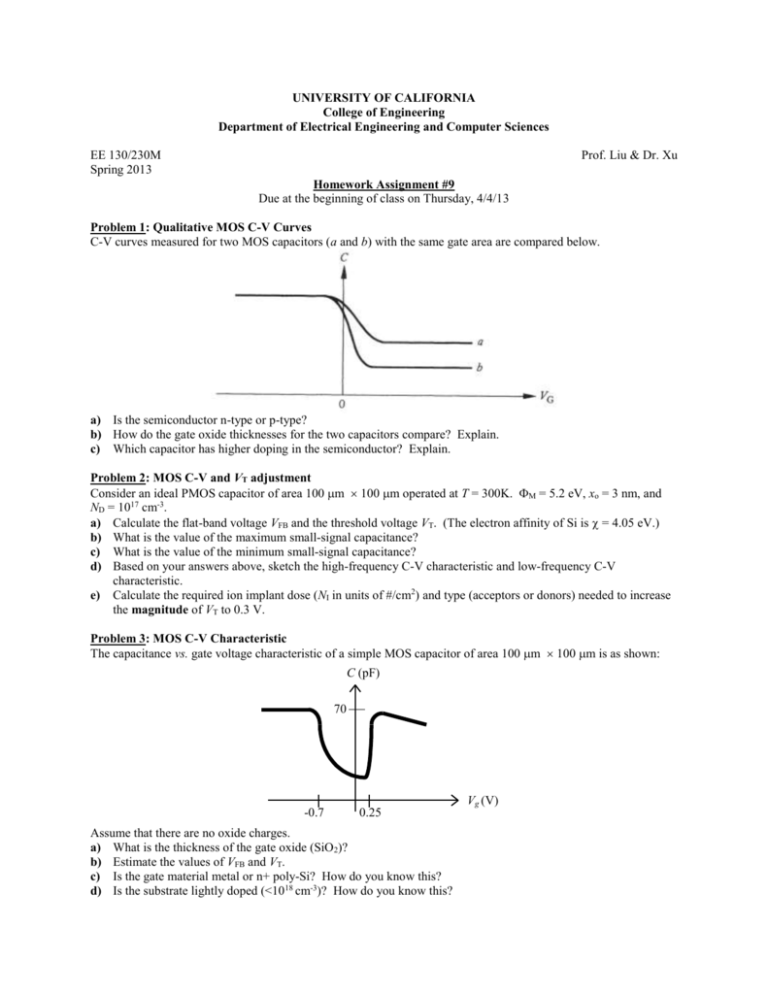
UNIVERSITY OF CALIFORNIA College of Engineering Department of Electrical Engineering and Computer Sciences EE 130/230M Spring 2013 Prof. Liu & Dr. Xu Homework Assignment #9 Due at the beginning of class on Thursday, 4/4/13 Problem 1: Qualitative MOS C-V Curves C-V curves measured for two MOS capacitors (a and b) with the same gate area are compared below. a) Is the semiconductor n-type or p-type? b) How do the gate oxide thicknesses for the two capacitors compare? Explain. c) Which capacitor has higher doping in the semiconductor? Explain. Problem 2: MOS C-V and VT adjustment Consider an ideal PMOS capacitor of area 100 m 100 m operated at T = 300K. M = 5.2 eV, xo = 3 nm, and ND = 1017 cm-3. a) Calculate the flat-band voltage VFB and the threshold voltage VT. (The electron affinity of Si is = 4.05 eV.) b) What is the value of the maximum small-signal capacitance? c) What is the value of the minimum small-signal capacitance? d) Based on your answers above, sketch the high-frequency C-V characteristic and low-frequency C-V characteristic. e) Calculate the required ion implant dose (NI in units of #/cm2) and type (acceptors or donors) needed to increase the magnitude of VT to 0.3 V. Problem 3: MOS C-V Characteristic The capacitance vs. gate voltage characteristic of a simple MOS capacitor of area 100 m 100 m is as shown: C (pF) 70 Vg (V) -0.7 0.25 Assume that there are no oxide charges. a) What is the thickness of the gate oxide (SiO2)? b) Estimate the values of VFB and VT. c) Is the gate material metal or n+ poly-Si? How do you know this? d) Is the substrate lightly doped (<1018 cm-3)? How do you know this? Problem 4: Effect of Oxide Charge In modern MOS devices, charges typically exist within the oxide or at its interface with the Si substrate. The different types of charges which may exist are illustrated in the figure below. Consider MOS devices with 3 nm thick SiO2: a) Suppose there is q×1011 cm-2 trapped charge located 1 nm below the gate electrode interface, and that there is also -q×1011 cm-2 trapped charge located 1 nm above the Si interface. Will the net impact of these charges on the threshold voltage due to these trapped charges be a positive shift or a negative shift in VT? Explain. b) Suppose the gate oxide contains 1011 cm-2 sodium ions (Na+). If the devices are turned on (gate biased such that the Si surface is inverted) for several hours at elevated temperature, which device (NMOS or PMOS) will show the greater threshold voltage shift from the ideal value? Why? Note: A positive gate voltage is used to turn on an NMOS device, whereas a negative gate voltage is used to turn on a PMOS device.
